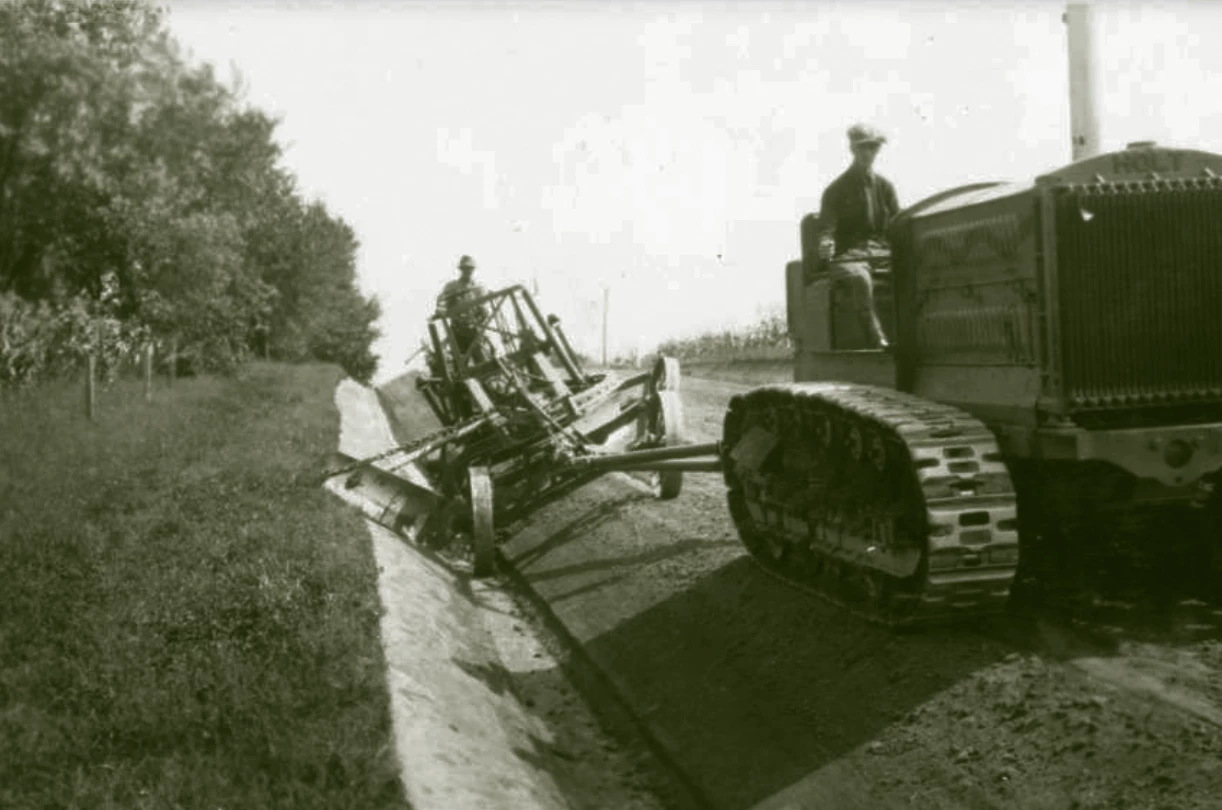Search
Looking for something in particular? Search for it here.
Looking for something in particular? Search for it here.
Automotive travel created a demand for better roads, as rural dirt roads could not withstand the increased use. Road maintenance and construction jobs increased.
Featuring:
Louis J. Schultze, (1882 – 1942), road oiler
Clarence Rowe, (1874 – 1929), construction
Louis J. Schultze (1882-1942) grew up on a Chenoa farm. He liked working on equipment, so his first job was at a Peoria machine shop where he gained skills he had not learned on the farm. In 1908 Louis returned to Chenoa and started the Schultze Machine Shop. From the shop Louis did blacksmith work, repaired farm equipment and automobiles, sold Overland cars, and developed and built specialized machinery.
Rural roads at the time were still dirt — dusty when dry and filled with ruts after a rain. When Louis learned that oiling roads cut down on dust and improved drainage (thus reducing ruts), he took action. He purchased and modified a Pierce Arrow Limousine, on which he installed a custom built oil tank with a spraying system. Soon he was hiring drivers to oil roads in dozens of McLean and Livingston county townships.
Grinder, circa 1920
View this object in Matterport
Louis’ machine shop was filled with tools he used for building new equipment and repairing damaged items, including this motorized, belt-driven grinding wheel, a torch for heating metal to be welded together, and a variety of wrenches.
Donated by: Roger Schultze
2017.45.01-04
Louis continued to develop, sell, repair, and patent new equipment at his shop until his death in 1942.
In 1922 Saybrook farmer Clarence Rowe (1874-1929) was elected road commissioner for Cheney’s Grove.
Well aware of the inherent difficulties of rural dirt roads and the effects of weather on them, Clarence convinced his constituents to invest in a heavy-duty tractor, a road drag, a road grader, and a truck for moving sand and gravel — all for graveling township roads. The township’s investment of $10,350 (equal to $148,000 in 2016) in equipment and gravel paid off.
With more and more trucks and cars being used, the new gravel roads were a solid improvement.
When other townships expressed interest in gravel roads, Rowe Brothers was formed (1926) and their business of road building began to grow. With his brother Willis Rowe (1876-1944) and his nephew Delmar Rowe (1908-1998), Clarence began to contract road improvements across McLean County.

The grader was pulled behind the tractor to raise and level the roadbed. Then a truck was used to spread even layers of sand and gravel, which were compacted by the tractor. The drag was pulled down the road to reduce ruts caused by traffic when the road became wet. This circa 1930 image illustrates the process.

Clarence died in 1929, but Willis and Delmar carried on to expand the business. The introduction of a motor fuel tax meant that thousands of dollars became available for road projects. By the end of the 1930s, Rowe Construction was doing gravel road work across the region.
Willis died in 1944, but Delmar kept the business going, expanding to include soil conservation work.
After World War II, Delmar expanded the scope of Rowe Construction’s work to include sewer, gas, and waterlines — logical additions as they all utilized the same equipment.
Delmar retired after selling Rowe Construction to a Tremont family in 1964.